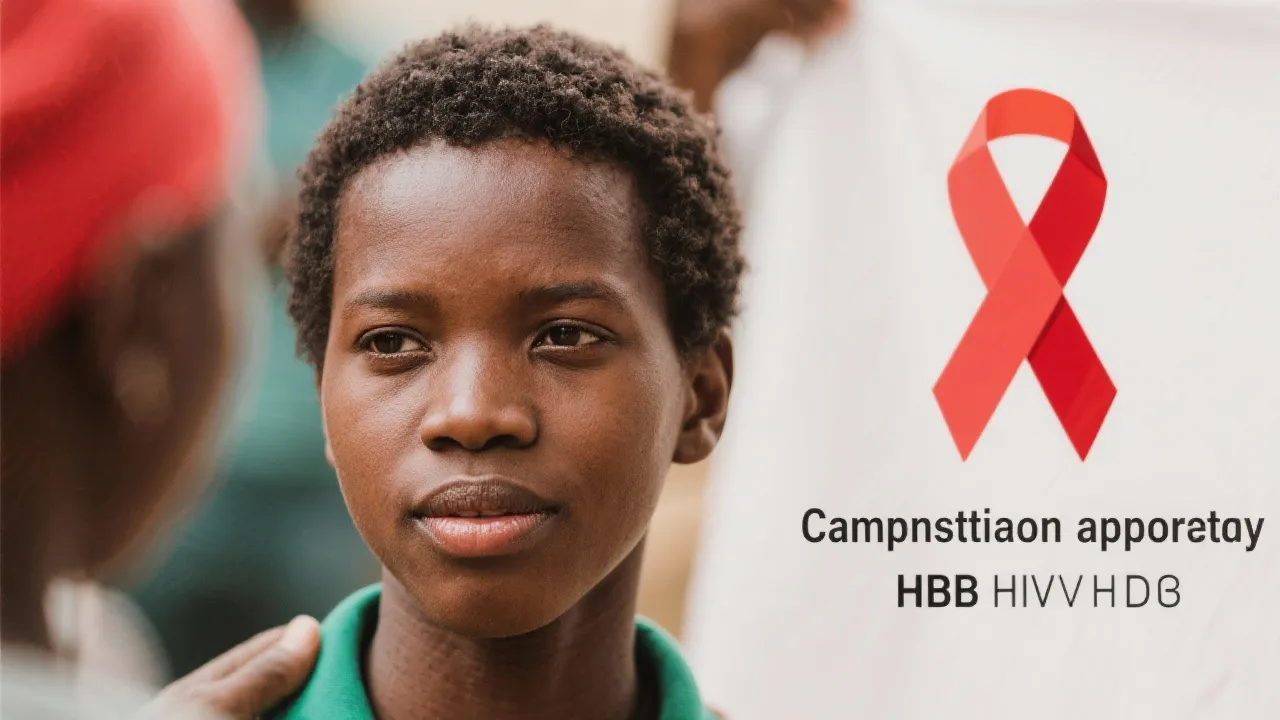This guide delves into the innovative strategies employed to combat HIV/AIDS, emphasizing prevention, treatment, and awareness efforts worldwide. HIV/AIDS remains a critical global health issue, requiring coordinated strategies to alleviate its impact. Through a blend of scientific advancements, educational initiatives, and community engagement, this article explores how various approaches are reshaping the fight against this epidemic.

Introduction to HIV/AIDS Alleviation Strategies
The global fight against HIV/AIDS represents one of the very intensely driven public health initiatives in history. The pandemic, which emerged in the early 1980s, continues to impact millions globally. As of recent statistics, approximately 38 million people are living with HIV, according to UNAIDS. To combat this enduring crisis, a multitude of strategies have been developed and implemented, each aiming to alleviate both the prevalence and the impact of HIV/AIDS on affected communities. The complexity of the epidemic requires comprehensive and integrated approaches that take into account the medical, social, and economic factors that contribute to the spread of HIV. This article will delve deeper into prevention and treatment strategies, innovative research efforts, and the critical role of community and cultural engagement in HIV/AIDS alleviation.
Prevention Strategies
Prevention remains a cornerstone in the arsenal against HIV/AIDS. Key strategies focus on reducing the transmission of the virus through various means. It is essential to understand that prevention is not a one-size-fits-all solution; adapting methodologies to suit different cultural, social, and economic contexts is imperative for success. The following are essential components of HIV prevention strategies:
- Education and Awareness: Educational programs targeting at-risk populations ensure individuals understand how HIV is transmitted and how to protect themselves. Campaigns are often tailored to local cultures and languages, ensuring maximum impact. These efforts can include workshops, seminars, community discussions, and training sessions that empower individuals with knowledge. More importantly, these initiatives help foster open discussions about HIV prevention, contributing to destigmatization.
- Condom Distribution: Widespread distribution of condoms alongside educational efforts has proven effective in preventing the sexual transmission of HIV. Initiatives are often community-driven to enhance acceptance and usage rates. Collaborations with local businesses, health clinics, and NGOs can facilitate the accessibility of condoms, ensuring that individuals have the necessary resources to protect themselves.
- Pre-exposure Prophylaxis (PrEP): PrEP involves taking antiretroviral medications before coming into potential contact with HIV, significantly reducing the risk of infection. This strategy targets individuals at high risk, including certain demographics and those in serodiscordant relationships. Ongoing monitoring and support for those on PrEP are crucial to ensure adherence to the regimen as well as assessing any side effects.
- Syringe Exchange Programs: To address the transmission among intravenous drug users, many regions have established syringe exchange programs, providing sterile needles to prevent the sharing of contaminated equipment. These programs not only reduce HIV transmission but also encourage users to engage in health services, including access to addiction treatment and healthcare.
- HIV Testing and Counseling: Regular testing and counseling for individuals at risk for HIV are crucial components of prevention. By normalizing testing practices within communities, individuals can gain awareness of their status, leading to earlier interventions and behavioral changes that reduce the spread of the virus.
Treatment Strategies
Once an individual contracts HIV, prompt and effective treatment is critical to managing the infection and preventing progression to AIDS. Current treatment strategies encompass both medical and holistic approaches:
- Antiretroviral Therapy (ART): ART involves a combination of multiple antiretroviral drugs aimed at controlling the virus's ability to replicate, maintaining patient health, and reducing the viral load to undetectable levels, thereby also reducing transmission risk. Lifelong adherence to ART is essential, and patients are supported with education about adherence techniques, possible side effects, and routine health screenings.
- Integrated Care Models: Integration of HIV services with other healthcare provisions, such as tuberculosis (TB) treatment, maternal health services, and non-communicable disease care, enhances patient outcomes. These integrated models provide a holistic treatment approach, addressing the diverse healthcare needs of those living with HIV.
- Early Diagnosis and Intervention: Early testing and diagnosis allow for timely initiation of ART, significantly improving health outcomes and reducing transmission rates. Community-based initiatives that promote testing and knowledge of serological status are integral to this process.
- Patient-Centered Care: Ensuring that treatment approaches are tailored to the individual needs of patients is vital. This means taking into account the co-infections, mental health issues, and socio-economic circumstances that might affect a patient's treatment adherence.
- Support Services: Providing comprehensive support services, including mental health counseling, nutritional advice, and social services assistance, can empower individuals living with HIV and ensure they maintain their treatment regimen. Numerous programs have demonstrated that supportive environments promote greater adherence to ART.
Community and Cultural Engagement
Community-based initiatives are fundamental in the fight against HIV/AIDS. These initiatives often involve partnerships with local leaders, organizations, and populations who may distrust outside entities. Engaging communities in the fight against HIV/AIDS creates a sense of ownership and responsibility:
- Empowerment and Advocacy: Communities are engaged in advocacy to reduce stigma and discrimination associated with HIV/AIDS, ensuring affected individuals feel supported and have access to services. Grassroots movements and campaigns that share personal stories can help humanize the issue and promote empathy and understanding.
- Peer Education and Support: Programs that employ individuals from within target communities to educate and support peers foster a supportive environment for those affected by HIV. Peer educators can relate to the experiences of their audience, which builds trust and encourages dialogue around HIV prevention and treatment.
- Culturally Competent Programming: Programs designed with cultural sensitivity in mind ensure that they resonate with community members. Understanding cultural beliefs, values, and norms can help shape the messaging and delivery of HIV-related services and information.
- Mobilization of Local Resources: Leveraging local resources, including community centers, faith-based organizations, and local governments, can provide essential support to HIV/AIDS initiatives. Utilizing existing networks allows for sustained outreach and intervention efforts.
Innovations in HIV/AIDS Research
Scientific research plays a critical role in developing new strategies to combat HIV/AIDS. Recent advancements include:
- Vaccination Research: Ongoing efforts to develop an effective vaccine continue, with several trials showing promise in inducing a potent immune response. Various vaccine candidates are undergoing rigorous testing to evaluate their efficacy and safety in diverse populations globally.
- Gene Therapy and Cure Research: Cutting-edge research explores the potential for gene editing technologies, such as CRISPR, to provide functional cures by excising or silencing HIV genes. This area of study holds immense potential to revolutionize the management of HIV, with some preliminary studies suggesting pathways toward functional cures.
- Long-acting Antiretroviral Agents: Innovations in drug formulations lead to long-acting injectables that only require administration every few months, thus improving adherence. Such advancements promise to alleviate the burden of daily pill regimens that many patients face.
- Data-Driven Approaches: Advances in data analytics, including machine learning and artificial intelligence, are utilized to map transmission networks, predict outbreaks, and personalize treatment plans more effectively. These approaches facilitate targeted interventions that can significantly reduce the spread of HIV.
Table of HIV/AIDS Strategies
| Strategy |
Details |
| Education & Awareness |
Programs tailored to local cultures to educate on HIV prevention. |
| Pre-exposure Prophylaxis (PrEP) |
Antiretroviral drugs taken prior to exposure to reduce infection risk. |
| Antiretroviral Therapy (ART) |
Combination therapy aimed at viral suppression. |
| Syringe Exchange Programs |
Provision of sterile needles to reduce transmission among drug users. |
| Community Engagement |
Involvement of local communities in advocacy and peer education. |
| Research and Innovation |
Investments in vaccine development and gene therapy approaches. |
FAQs
- What is the primary goal of educational campaigns in HIV prevention?
To inform at-risk individuals of transmission risks and preventative practices, thereby decreasing infection rates. Tailoring these campaigns to address specific audience needs and concerns heightens their effectiveness.
- How important is community engagement in combating HIV/AIDS?
Extremely important; it fosters a supportive environment and helps overcome cultural barriers and stigma. Engaging community leaders can amplify outreach efforts and improve acceptance of health services.
- Why is early diagnosis critical in managing HIV?
Early diagnosis allows for immediate initiation of ART, significantly improving health outcomes and preventing further transmission. Increased testing accessibility and awareness can help reduce late diagnoses.
- What role does scientific research play in addressing HIV/AIDS?
Scientific research drives innovations that can alleviate the burden of the disease, from developing preventive vaccines to improving treatment regimens. Ongoing research is essential to adapt to the evolving landscape of HIV/AIDS.
- How do stigma and discrimination affect HIV/AIDS prevention and treatment?
Stigma associated with HIV/AIDS often leads to discrimination, preventing affected individuals from seeking care, getting tested, or adhering to treatment. Addressing stigma through education and advocacy is crucial for effective prevention and management.
Through a multifaceted approach combining prevention, treatment, community engagement, and research, the global health community continues to make significant strides in the pursuit to eradicate HIV/AIDS. While challenges remain, ongoing international cooperation and innovation give hope for a future where the epidemic is effectively managed. The collective commitment to implementing comprehensive strategies must be strong, ensuring that the lessons learned guide the way forward. Sustaining momentum in HIV/AIDS initiatives also means recognizing the interconnectedness of health with socio-economic factors, advocating for comprehensive health policies, and respecting human rights as central to the response. With a steadfast focus on the holistic needs of those affected, substantial progress can be made in diminishing the prevalence of HIV/AIDS while ensuring that those impacted receive the respect, care, and support they deserve.









